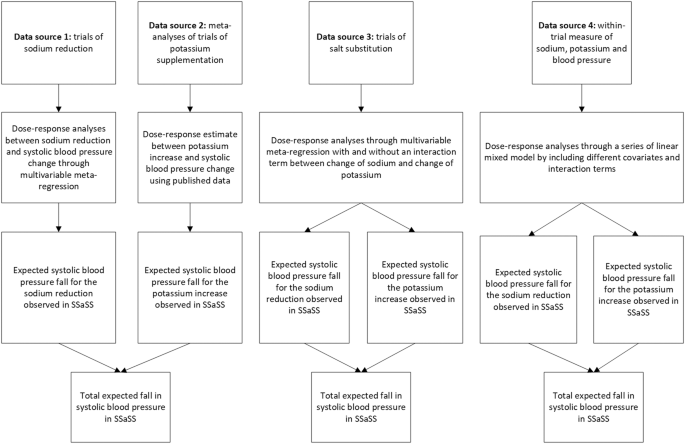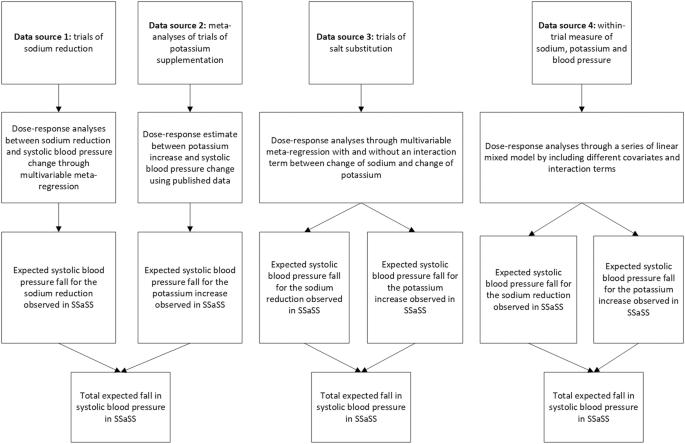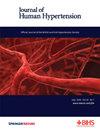食盐替代品与中风研究》中观察到的降低血压的作用是减少钠和增加钾。
IF 2.7
4区 医学
Q2 PERIPHERAL VASCULAR DISEASE
引用次数: 0
摘要
食盐替代品与中风研究(SSaSS)表明,使用富含钾的食盐可显著降低收缩压(SBP)以及中风、主要心血管事件和总死亡率的风险。钠的减少和钾的增加对这些效果的贡献尚不清楚。我们确定了四个不同的数据来源,描述了减钠、补钾和 SBP 变化之间的关联。然后,我们拟合了一系列模型来估计 SSaSS 中钠和钾摄入量的差异对 SBP 降低的预期,这些数据来自 24 小时尿液收集。我们分别计算了钠减少和钾补充导致的 SBP 下降比例。在 SSaSS 中观察到的 SBP 降幅为-3.3 mmHg,相应的 24 小时钠排泄量平均减少 15.2 mmol,24 小时钾排泄量平均增加 20.6 mmol。假设 90% 的膳食钠摄入量和 70% 的膳食钾摄入量通过尿液排出,模型预测 SBP 的降幅在-1.67(95% 置信区间:-4.06 至 +0.73)mmHg 和-5.33(95% 置信区间:-8.58 至 -2.08)mmHg 之间。在不同的模型中,估计降钠对 SBP 下降的贡献比例介于 12% 和 39% 之间。假设膳食钠和钾摄入量的尿排泄比例不同的敏感性分析显示了类似的结果。在每个模型中,SSaSS 降低 SBP 的大部分效果估计归因于膳食中钾的增加,而不是膳食中钠的减少。本文章由计算机程序翻译,如有差异,请以英文原文为准。


The contribution of sodium reduction and potassium increase to the blood pressure lowering observed in the Salt Substitute and Stroke Study
The Salt Substitute and Stroke Study (SSaSS) demonstrated significant reductions in systolic blood pressure (SBP), and the risk of stroke, major cardiovascular events and total mortality with the use of potassium-enriched salt. The contribution of sodium reduction versus potassium increase to these effects is unknown. We identified four different data sources describing the association between sodium reduction, potassium supplementation and change in SBP. We then fitted a series of models to estimate the SBP reductions expected for the differences in sodium and potassium intake in SSaSS, derived from 24-h urine collections. The proportions of the SBP reduction separately attributable to sodium reduction and potassium supplementation were calculated. The observed SBP reduction in SSaSS was −3.3 mmHg with a corresponding mean 15.2 mmol reduction in 24-h sodium excretion and a mean 20.6 mmol increase in 24-h potassium excretion. Assuming 90% of dietary sodium intake and 70% of dietary potassium intake were excreted through urine, the models projected falls in SBP of between −1.67 (95% confidence interval: −4.06 to +0.73) mmHg and −5.33 (95% confidence interval: −8.58 to −2.08) mmHg. The estimated proportional contribution of sodium reduction to the SBP fall ranged between 12 and 39% for the different models fitted. Sensitivity analyses assuming different proportional urinary excretion of dietary sodium and potassium intake showed similar results. In every model, the majority of the SBP lowering effect in SSaSS was estimated to be attributable to the increase in dietary potassium rather than the fall in dietary sodium.
求助全文
通过发布文献求助,成功后即可免费获取论文全文。
去求助
来源期刊

Journal of Human Hypertension
医学-外周血管病
CiteScore
5.20
自引率
3.70%
发文量
126
审稿时长
6-12 weeks
期刊介绍:
Journal of Human Hypertension is published monthly and is of interest to health care professionals who deal with hypertension (specialists, internists, primary care physicians) and public health workers. We believe that our patients benefit from robust scientific data that are based on well conducted clinical trials. We also believe that basic sciences are the foundations on which we build our knowledge of clinical conditions and their management. Towards this end, although we are primarily a clinical based journal, we also welcome suitable basic sciences studies that promote our understanding of human hypertension.
The journal aims to perform the dual role of increasing knowledge in the field of high blood pressure as well as improving the standard of care of patients. The editors will consider for publication all suitable papers dealing directly or indirectly with clinical aspects of hypertension, including but not limited to epidemiology, pathophysiology, therapeutics and basic sciences involving human subjects or tissues. We also consider papers from all specialties such as ophthalmology, cardiology, nephrology, obstetrics and stroke medicine that deal with the various aspects of hypertension and its complications.
 求助内容:
求助内容: 应助结果提醒方式:
应助结果提醒方式:


